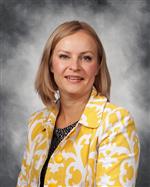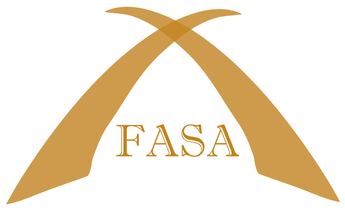Three Communication Practices That Successfully Transform School Culture, Regardless of Your Preference

By Julia Ulmann, Ed.D. Assistant Principal, NewCity Academy, Osceola County
Let's be real—between budget meetings, discipline referrals, and the 127 unread emails in your inbox (all of which are marked "urgent"), finding time to think about school culture might seem like a luxury you can't afford. But here's the uncomfortable reality: you're building your school's culture every day, whether you intend to or not.
As leaders, we drone on about constructing culture, as if it's something that we can order online and have delivered by next Tuesday. The reality? School culture is established in those five-minute interactions between classes, how you respond when a teacher is on the verge of tears in your office, and the stories you choose to tell at faculty meetings.
Instead of putting "transform school culture" on your already overwhelming to-do list, this paper presents three communication habits that are already a part of your daily life, which—if done on purpose—can significantly impact your school's culture.
1. Put Your Phone Aside and Listen for Once
We are all guilty of it—nodding agreement with a teacher's concern while simultaneously typing an email, checking the clock, and thinking about what we will say next. Berkovich and Eyal (2018) examined what happens when principals do engage in empathic listening versus simply extracting information efficiently. The results were dramatic.
Teachers who experienced empathic listening (in which principals showed they understood both facts AND feelings) showed high levels of positive emotional shift. Whereas principals who jumped into problem-solving or fact-finding left teachers feeling no less anxious than before.
What is particularly fascinating about this finding is that most people view themselves as good listeners. Yet the research suggests otherwise. As explained by a veteran educator, "I can tell within five seconds whether my principal is actually listening or just waiting for me to stop talking."
Need a quick reality test? Try counting the number of times today you cut someone off in mid-sentence because you already knew where they were headed. That count may say more about your school's culture than you'd care to acknowledge.
2. Tell Stories, Not Platitudes
"We believe all children can learn." "We're committed to excellence." Yawn.
Clichéd mission statements and educational buzzwords are the beige wallpaper of school administration—harmless, unmemorable, and completely worthless for establishing authentic culture.
Peterson and Deal (2016) found that excellent culture creators do not use slogans but stories. They gather and recount stories of certain events that demonstrate the real values the school believes in.
Rather than always saying "we value innovation," consider the following: "Yesterday, I stopped by Ms. Johnson's class, where students were making podcasts to assist in explaining math concepts to younger students. One girl, who has had a difficult year, really excelled when she led her group. This is the type of learning experience we hope to promote."
Personal stories stay with people. Bland mission statements get forgotten faster than morning announcements.
3. Learn the Art of Reframing (Without Being Manipulative)
How teachers are presented with their problems (and they inevitably will arise) greatly influences how much more resilience your staff accumulates or how much more resentment they develop.
Berkovich and Eyal's (2018) study pinpointed two reframing strategies that were especially successful:
Empowering reframing: "This is a complicated situation, but I know how inventive you are in solving problems. You have more power here than you may be aware."
Normalizing reframing: "What you're going through is something that many great teachers grapple with. This issue doesn't determine your potential as a teacher."
What's curious is that both approaches were successful, but combining them was less successful than choosing the appropriate one for the situation. It's less a matter of a single fits-all solution than matching your reframing to the person and problem.
The very worst way? Toxic positivity posing as reframing: "Just look on the bright side!" or "Everything happens for a reason!" These responses don't build culture—they destroy trust faster than a badly designed professional development day.
Establishing Cultural Practices within Everyday Situations
Sebastian and co-authors (2016) found that while principals influence student achievement through many routes, they have their greatest impact by establishing a positive school climate, and school climate is built talk by talk.
The good news? You're already having dozens of interactions every day that shape your school's culture. You don't need to add culture-building to your to-do list. You simply need to be more intentional about the conversations you're already having.
The bad news? There is no place to hide. Your communication habits—the good, the bad, and the hasty—are creating your school's culture right now.
So when you're tempted to just half-listen to an instructor's issues while watching the clock, remember that this quick five-minute conversation will have a far greater impact on your institution's culture than that motivational poster in the staff lounge.
What will you do differently tomorrow?
References:
Berkovich, I., & Eyal, O. (2018). Principals' communication practices and teachers' emotional distress. Educational Management Administration & Leadership, 46(4), 642-658.
Peterson, K. D., & Deal, T. E. (2016). How leaders influence the culture of schools. In Teacher leadership: The "new" foundations of teacher education (pp. 163-166). Peter Lang AG.
Sebastian, J., Allensworth, E., and Huang, H. (2016). The influence of teacher leadership on the ways in which principals impact instructional practices and student academic outcomes. American Journal of Education, 123(1), 69-108.
